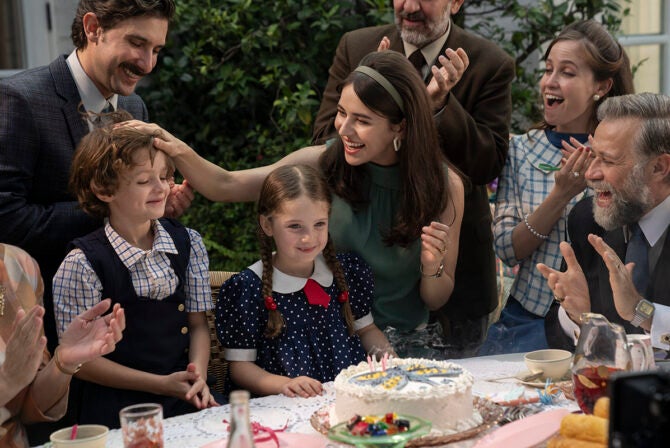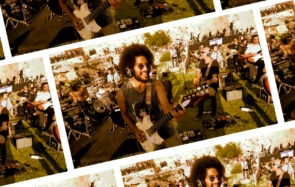Passover, it turns out, is the most widely celebrated Jewish holiday. More than Hanukkah, even. I know that seems hard to believe, but it’s true (or so I’ve heard). And for that, we have the Passover seder to thank.
It’s a hands-on, family-friendly, adaptable, and interactive. Guests, Jewish or not, can easily figure out what’s going on. Kids are welcomed (even needed) throughout–after all, if there was no one to find the afikomen, we could never end the seder. And the youngest child is given the honor of reciting the Four Questions, though to some kids that can feel like a somewhat dubious honor.
But even though the seder needs kids, kids don’t always like the seder. There’s a lot of talking involved. And sometimes it’s…boring. Which is why kids don’t always make it through the seder. Before too long, they’re running around the table, climbing on the couches, or poking the family dog/cat/gerbil. So here are some tips on how to keep your kids focused–and happy–at this year’s seder.
Five ways to make your seder more kid-friendly:
1. Prepare
Whenever going into a new situation, kids do better when they know a little bit about what’s going to happen. In this case, you want to explain that the seder is a special meal, that there might be a lot of talking, and that it celebrates the story of the Exodus from Egypt. Get some books that tell the story and you can read in advance. In the same way that you prepare for Passover by cleaning and cooking, prepare your little one for the seder with stories.
2. Hagaddah-it-up
Have your kids make their own hagaddot. In the weeks before the seder, as you’re telling them about the seder and the Passover story, have them draw pictures as they learn. They can draw matzah, a seder plate, themselves singing the Four Questions, the 10 plagues, Moses meeting Pharaoh, crossing the Red Sea to freedom? Whatever they’d like. It might be nice for you to ask your child to describe the picture to you, and write a sentence about that picture on the bottom (for reference later so that you’re not confused by pages of scribble from your 2-year-old). Then simply attach the pages together (I’m a fan of the three-hole punch and some ribbon or yarn to tie it up) and you’ve got a hagaddah that your child can share with all of the seder guests, and use to follow along.
3. Snacks
One of the first steps of the seder is eating karpas, the parsley, which we dip in saltwater. Kids LOVE dipping stuff. And actually, one of the Four Questions is about dipping: “Why on this night do we dip twice, when usually we don’t even dip once?” Dipping your food in sauces and condiments was once a sign of royalty–the opposite of being a slave. So to celebrate our freedom, we do a lot of dipping! Your kids can really get into this one. Set up platters of cut veggies and fruit at each of the kids’ plates, with assorted dips (from simple salad dressing to yogurt to almond butter to honey? be as creative as you’d like!) This way, your kids are dipping and snacking and enjoying themselves.
4. Music & Four Questions
Again, preparation is everything. If your child is the youngest attending the seder, he has a very special job: the Four Questions. Now, I know that not every kid is going to learn all four questions?in Hebrew? when they’re 2. But if my 20-month-old can sing Twinkle Twinkle Little Star, I’m determined that she can sing “Ma nishtana ha-laila hazeh” if we practice that one line enough. If it’s a song, it’s fun! So sing it again and again, or, better, listen to it on Shira Kline’s album, Shirlala Pesach. We’re a fan of lots of Passover music but this album is perhaps our fave. It covers the Passover story, the seder, and she even sings the Kiddush for you! Listening to it enough will help you and your kids know the songs of the seder and be able to participate in them–or maybe even lead them!
5. Afikomen
Now, this is the best part of the seder when you’re a kid. And everyone can participate–even the littlest ones who only know peekaboo. You can think of the afikomen hunt as peekaboo with matzah. In the beginning of the seder, an adult hides half of the middle matzah, which is then called the afikomen, and it’s the kids’ job to find it. Before the seder, get your kids excited about finding the afikomen. Practice hiding a piece of matzah around the house (or maybe just a cloth napkin–you probably don’t need more kid crumbs around your home). Remind the kids that the afikomen search comes after dinner–so they have to stay involved/at the table until then. And they get a prize. Speaking of which, you better work on what you’re going to get them. With all this preparation work, you’re setting the expectations high!
Photo Credit: SpecialKRB







